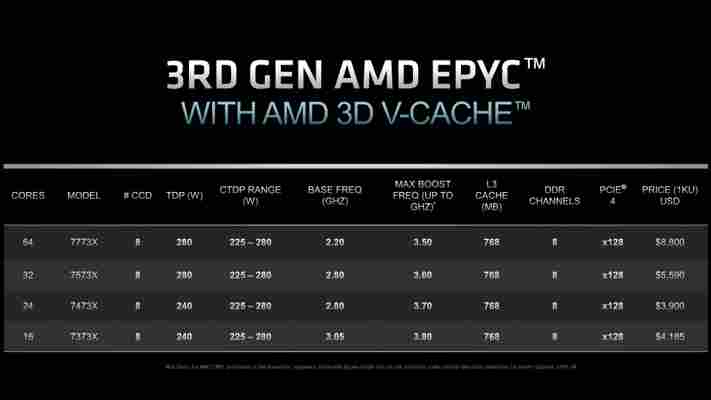The most recent PS5 update – version: 22.01-05.02.00 – "improves system performance" according to Sony's patch notes , but it's a feature that was sneakily added in the last system update that's causing issues for some users. Sony secretly added auto low latency mode support (ALLM) for compatible TVs in version 22.01-05.00.00, which automatically ensures your display is set to the optimal picture mode. However, you might have noticed that certain TV settings are now no longer available.
As shown by HDTVTest ’s Vincent Teoh, several TV settings can’t be accessed or are grayed out after installing the latest PS5 system update , meaning that you can’t enable certain features like black frame insertion (BFI) or motion smoothing.
The reason is because of PS5 ’s new ALLM support, which forces your TV to use the most optimal picture setting for gaming and disables any video processing settings that can increase input lag .
Unfortunately, though, Sony didn’t include a toggle to enable or disable ALLM like on Xbox Series X |S, which means you’re at the mercy of these new settings unless you can disable it via your TV, if possible.
On the LG OLED C9 and LG OLED CX , the solution is relatively simple. Head to your picture settings, click on the additional settings sub-menu, and turn off ‘Instant Game Response’ for the HDMI port to which the PS5 is connected. You will not be able to adjust all the settings, even in Game Mode. This will disable VRR support , but as the PS5 currently doesn’t support variable refresh rates just yet, this isn’t a problem for now.
If you have an LG OLED C1 or C2 , it’s not as straightforward and there’s a big caveat to bear in mind. Summon the user menu by long-pressing the cogwheel button on your remote and go into the ‘General’ submenu. Click on ‘Devices’ > ‘HDMI Settings’, and turn off ‘HDMI Deep Color’, which will disable ALLM. However, if you turn off HDMI Deep Color, you’ll lose HDR support and will be locked to a maximum frame rate of 60fps. Hardly ideal.
To disable ALLM on Sony TVs , bring up the settings menu, click on ‘Channels & inputs’, scroll down and click on ‘External inputs’. From there, click on ‘HDMI signal format’, select the correct HDMI port and change the setting to ‘Enhanced format ( Dolby Vision )’. Again, this will cap your games to a maximum frame rate of 60fps.
ALLM or nothing

Even though these workarounds will let you disable ALLM, they’re not exactly solutions by any means. The real fix will have to come from Sony, who will hopefully add an on/off toggle in a future update, just like we’ve seen on Xbox Series X|S.
The majority of users might not even encounter any issues with ALLM, as it’s primarily designed to help those who aren’t comfortable with exploring their TV settings get the best experience possible while gaming. For more advanced users, though, ALLM in its current implementation on PS5 is rather restrictive, and the fact it can’t be turned off without resorting to rather drastic measures is disappointing.
ALLM is still a desirable feature, though, and brings the PS5 more in line with the display tech available on Xbox Series X|S. Sony’s console is set to get VRR support in the months ahead , but we’re still crossing our fingers for 1440p support , an option that is frustratingly absent on PS5.
AMD EPYC Milan-X CPUs hit the shelves with an eye-watering price tag
AMD has confirmed that its latest 7003-series EPYC server processors, codenamed Milan-X, have entered general availability.
Announced alongside the company’s MI200-series GPUs in December 2021 , the new chips improve upon existing third-generation EPYC SKUs with the introduction of 3D V-Cache, a proprietary die-stacking technology developed in partnership with TSMC.
Courtesy of the addition, Milan-X processors offer three times more L3 cache than previous EYPC chips (768MB) and are said to yield up to 66% greater performance across targeted workloads.
AMD EPYC Milan-X now available
The AMD EPYC Milan-X series is billed as the first ever line of data center processors to utilize 3D die stacking. Essentially, this means CPU components like the logic unit and cache memory are stacked on top of each other, maximizing the use of vertical space rather than expanding the total surface area of the SoC.
The benefit of such an approach is that far more cache memory can be squeezed into the same SP3 socket, leading to significant performance increases across technical computing workloads that rely on large quantities of data, such as computational fluid dynamics and structural analysis.

AMD described these kinds of workloads as essential tools for “companies that must model the complexities of the physical world” to inform the design of innovative new products.
“Building upon our momentum in the data center as well as our history of industry-firsts, 3rd Gen AMD EPYC processors with AMD 3D V-Cache technology showcase our leadership design and packaging technology, enabling us to offer the industry’s first workload-tailored server processors with 3D die stacking technology,” added Dan McNamara, SVP and GM of AMD’s server business.
“Our latest processors provide breakthrough performance for missions-critical technical computing workloads leading to better designed products and faster time to market.”
The new Milan-X processors come in four flavors, with core counts ranging from 16 to 64. The most expensive SKU, the EPYC 7773X, comes in at a price of $8,800 per unit, which is roughly 12% higher than the next most performant model.

However, AMD claims that the performance improvements on offer with Milan-X means companies could run identical jobs on far fewer servers, consuming far less power in the process. Apparently, this could lead to a TCO saving of more than 50% over a three-year period.
AMD EPYC Milan-X chips will be available from a variety of OEM partners from today, and also power all HBv3 virtual machines from Microsoft Azure.
New Moon Knight, Doctor Strange 2 teasers may debut during Super Bowl
New Moon Knight and Doctor Strange in the Multiverse of Madness trailers will air during this year's Super Bowl, according to reports.
Ahead of this year's NFL Championship game, Deadline has claimed that Marvel Studios' next TV show and movie will form part of the Super Bowl's TV commercial line up. Deadline's report seems pretty believable too, with prominent Marvel leaker DanielRPK (per the Doctor Strange 2 Updates Twitter fan account ) suggesting that a new Doctor Strange 2 teaser will be shown. There are no other rumors concerning new Moon Knight footage, though.
If both Marvel Phase 4 projects are part of Super Bowl LVI's money-spinning advert line up, it's unlikely that we'll see full length trailers. Instead, 30-second long TV spots, containing snippets of new footage, are sure to be the order of the day. That's because Super Bowl broadcaster NBC restricts the length of all commercials to just 30 seconds, even though it's charging an eye-watering $6.5 million per TV spot for this year's event.
Deadline goes on to claim that other studios will debut new footage from their upcoming slates, too. Universal Pictures may tease more Jurassic World: Dominion footage, while Paramount Pictures could turbocharge its Sonic the Hedgehog 2 marketing campaign with a new TV spot. Pixar may show off a few snippets for its upcoming Lightyear movie , and Netflix is expected to air some form of trailer for The Adam Project, a new film from Ryan Reynolds and Shawn Levy.
Warner Bros, Sony, Apple, HBO Max, and Hulu are not expected to release any new footage for their upcoming projects. Fans eager for movies like The Batman and Morbius, then, are sure to be left disappointed.
Analysis: does Marvel need to advertise its movies and TV shows?

As the owner of the world's biggest movie franchise, it may seem odd that Marvel Studios continues to promote its upcoming productions so heavily.
The majority of Earth's population are already aware of what the Marvel Cinematic Universe (MCU) is. Meanwhile, those who actively look out for new Marvel movies and Disney Plus shows are heavily invested in the franchise, so Marvel doesn't really need to appeal to them more than it does.
So why does Marvel feel the need to market its films and TV shows? The answer is simple: competition.
If the studio isn't putting its projects in front of viewers, it's likely that their attention will be drawn to rivals' movies and TV series. And, if audiences are left intrigued or excited by a new Warner Bros. DCEU movie or Netflix show , they'll potentially stump up their hard-earned cash to watch them instead of Marvel content. Unsurprisingly, that would hit the studio's revenue streams (and those of parent company Disney, too) hard.
In the everlasting battle for theatrical and streaming platform supremacy, then, Marvel has to continue marketing its forthcoming productions. It wants viewers to watch its content and, even if audiences are aware of what's coming from the studio, it won't want you to forget which superhero is starring in them, what the story is about, and when they'll be released.
No matter if it's posting new trailers online, or forking out $6.5 million for a 30-second Super Bowl TV spot, Marvel will continue to actively promote its films and TV shows. So non-Marvel and non-superhero fans, especially those who think these properties are " ruining the industry ", will just have to put up with the studio's marketing campaigns.